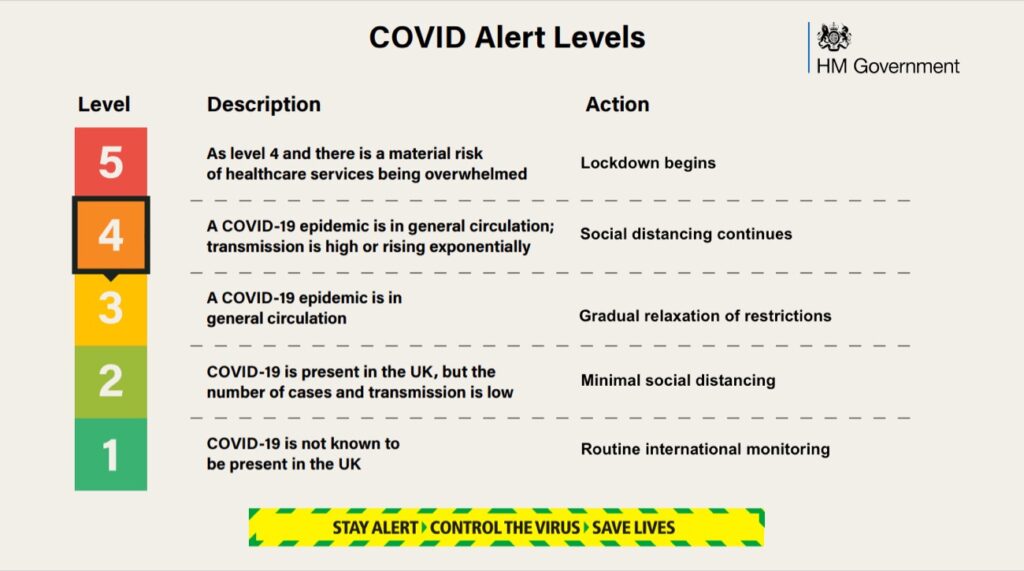The UK’s coronavirus alert level has been changed from three to four. It means transmission of the virus is now high, or rising at an increasing rate.
How is the alert level set?
The government unveiled the system in May this year. Risk levels are measured by a five-level, colour-coded alert system.

- Level five (red) – a “material risk of healthcare services being overwhelmed” – extremely strict social distancing
- Level four – a high or rising level of transmission – enforced social distancing
- Level three – the virus is in general circulation – social distancing relaxed
- Level two – the number of cases and transmission are low – minimal social distancing
- Level one (green) – Covid-19 is no longer present in the UK – no social distancing
- Graphic showing coronavirus alert levels from 5-1 where 5 is risk of overwhelming healthcare services, 4 is transmission high, 3 is virus in general circulation, 2 is number of cases and transmission low, 1 virus no longer present in UK
What is the current level?
The level four alert level announced on 21st September means the epidemic is in general circulation and transmission is “high or rising exponentially”. It had been reduced from level four to three on 19th June.
Chief medical officers of England, Scotland, Wales and Northern Ireland said cases were “rising rapidly and probably exponentially in significant parts of all four nations”.
They said that to avoid significant excess deaths and exceptional pressure on the NHS “everyone has to follow the social distancing guidance, wear face coverings correctly and wash their hands regularly”.
What determines the level?
Covid-19’s reproduction (R) number, a scientific measure of how fast the virus is spreading
The number of confirmed coronavirus cases at any one time
Who sets the level?
The Joint Biosecurity Centre (JBC) – set up by the government in May – has the task of recommending what the alert level should be.
JBC scientists identify changes in infection rates using testing, environmental and workplace data.
The JBC also has an “insight team” which monitors local spikes of Covid-19 and advises health officials and local authorities.
Their recommendations are then reviewed and agreed by the chief medical officers of the four UK nations.
Does a change of level mean that restrictions are eased (or tightened?)
Not automatically. The Covid-19 alert level system is separate and independent from any government decisions on easing or tightening restrictions. In England, those decisions are determined by the government’s five tests.
However, the alert level system is used by the UK governments to help their decisions on lockdown.















